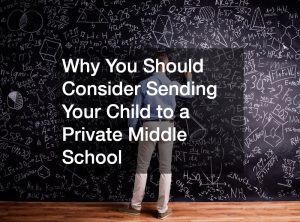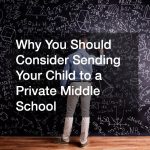While traditional schooling exists so children have educational outlets to help them in the future, some parents may feel that this is not enough. For instance, some students may have needs that can’t be provided in a regular classroom. Some parents want their children to learn in an environment free of bullying and peer pressure. Some parents want their children to study in a more flexible learning environment. And some parents simply want to protect their children, given the increasing numbers of school shooting incidents.
But how does homeschooling work, exactly? Well, it depends on which state you live in. In some states, it’s as easy as sitting your kids down and reading from a book of your choice. In other states, however, it means becoming a licensed teacher and meeting your state’s educational standards. Here’s how homeschooling could work, so you can check whether it’s a possible choice for you and your children.
Check Your State’s Homeschooling Regulation
There are many types of homeschooling programs. However, since homeschooling regulations vary between states, you need to check if the type of homeschooling program you want for your child complies with your state requirements. For example, if you’re looking for a more informal method of education, you can do it in Idaho or Illinois, where you don’t have to contact the school district or have a curriculum approved. However, if you live in New York (where you need to provide quarterly reports and annual assessment reports) or Washington (which requires the teacher to be someone certified to teach), this may be unavailable options to you.
Use this website as a guide for homeschooling laws and policies in your state. However, it’s best to contact your local school district to get an updated list of requirements and criteria so you can gauge ahead of time if homeschooling is the better option for your child.
Choose Your Program
Once you’ve figured out which programs are available for you, you can choose which one is best for your child.
Traditional Homeschooling
This is available in all states, though the level of strictness and standards on who can teach your child vary between states. In this method, you’re basically creating a school setting for your child but in the comfort of your own home. This means having a curriculum, books, tests, schedules, and even “homework,” which consist of writing assignments.
In most cases, you (or a relative or a certified teaching professional, depending on state laws) will have to play an active and hands-on role. Aside from the role of teaching, you’ll also be required to take note of their attendance, grading, credits, and the other technical matters teachers handle.
Online Homeschooling
Some accredited schools and other educational organizations offer online homeschooling programs online. These programs already have quizzes, tests, curricula, and everything you need to ensure your child gets quality education at the comfort of your own home. However, compared to traditional homeschooling, this isn’t as flexible. Some programs have required login times or live video feeds from instructors, requiring your child to log in at specific times.
Blended Learning Programs
Blended learning programs are a mixture of traditional homeschooling and online homeschooling. In some cases (especially if a parent isn’t equipped to teach more advanced subjects), having both types of education can be beneficial. A child can have different learning styles depending on the subject, and having both ready can provide them with a customized form of learning.
This type of program is also beneficial when you don’t have the learning rooms available in schools. For example, you may not have a greenhouse or laboratory, but online instruction can provide your child with materials and resources that provide the same education.
Unschooling Method
If you’re more into the flexible methods of homeschooling, the concept of “unschooling” or natural learning may appeal to you. In this method, children pursue studies based on their interests, not on a curriculum. This method, however, is only available in states with less strict homeschooling standards. Students do not rely on textbooks and lectures but instead, go for learning moments throughout their activities in life.
Homeschooling with Other Families
The biggest argument for why homeschooling is bad is that children are kept at home and away from other children. The fear is that homeschooled children become less socially adaptable. However, this is not necessarily the case as homeschooling co-ops and networks may already exist in your area.
First of all, if you choose to take a homeschooling program under an “umbrella organization” (an organization that manages many homeschooling families), your child will be invited to activities and gatherings with other homeschooled children. This will provide them with the social network, group classes, playdates, and other social events they need to develop.
Overall, the way homeschooling works ultimately depends on where you live and how you want to teach your child. If there is no conflict between the two, you can go on ahead. But if there is, you might have to rethink the program you want for your child or if homeschooling in your state really is the better option than private of public schools.
















